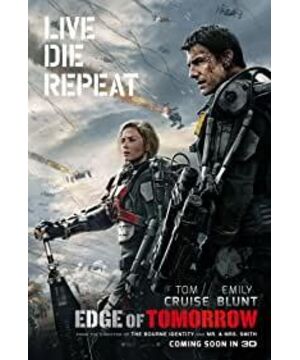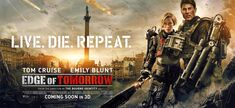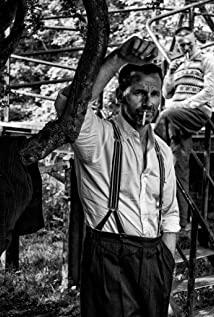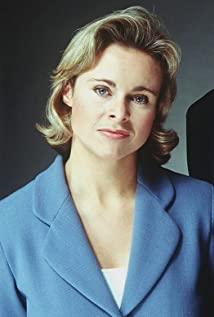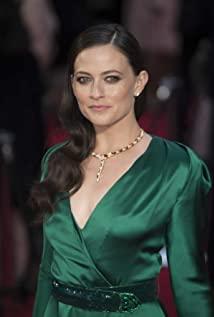When playing games when I was a child, the most important thing is to memorize all the boards. Where there are secret passages, where there are hidden weapons, and where there are strange things, memorize them all, and then go to extort confessions or something else, it becomes easy and pleasant - not someone playing Is "Contra" just about how to use the least amount of ammo to clear the level in one life? It's just practiced by memorizing all the boards.
And this is the essence of Edge of Tomorrow.
To be honest, I prefer the original book "All You Need Is Kill" by Hiro Sakurasaka (Taiwan translation of "Killing Reincarnation"), of course, I can't count the original version, because I read the manga version drawn by Takeshi Kobata ——But, compared to the Hollywood movie "Edge of Tomorrow", I prefer the ending of "Killing Samsara".
In fact, the differences in plots and characters between the manga version and the movie version can be clearly seen in the cultural differences between Japan and the United States, as well as the anime/film industry.
The difference can be seen only in the way the protagonist improves and fights: in the comic version, the hero and heroine pursue "sleep after death", that is, let the body contain the memory of fighting, and make the body have the consciousness of fighting. The combat cooperation of the hero and heroine is also a tacit understanding that has been cultivated through countless physical training and observation. In the movie version, the hero and heroine pursue the memory of the battle situation - more like pure SL Dafa. The difference between the two is that the former battle becomes the body's instinct in the end, while the latter's battle is just a memory.
This is naturally also reflected in the enemy's strategy - in the original book, the enemy will also be adjusted each time based on the previous battle, so each battle is different; in the movie version, we obviously found that the enemy every time The place and time of appearance are the same.
This involves the most "hardcore" part of the movie -
how does time reincarnate?
In the real world this is naturally impossible, but in the author's constructed world, things can be different.
Alien "mimicry" has developed a technology that uses tachyons (this is not explicitly mentioned in the movie version) to establish a communication mechanism between the past and the future, so as to save a certain moment (in the movie version) It is through the Omega that controls all the mimetic beasts, which is the "host" in the original book), and then informs the past to re-read the file at some point in the future (in the movie version, it is the rare mimetic beast Alpha, but in the original book is still the "host" ), so it all started all over again.
The male and female protagonists participate in this reincarnation through occasional opportunities.
In the original work, the hero and heroine were accidentally connected because the hero and heroine sent a superluminal signal to the past to request to re-read the file while they were breaking the "host". Time reincarnation network - and the brain tissue has also undergone permanent lesions, becoming another "host".
Therefore, in the original novel, the heroine did not break the antenna that notified the past every time she broke the "host", nor did she break the backup of the re-read file, so every time she killed the mimetic host, she would suddenly return to To 30 hours ago - and finally destroyed the mainframe's antenna and backup, and jumped out of the cycle. As for the male protagonist, after he killed a host due to an accident, he also obtained the same ability and was connected to the time network, but each time he died after that, there was no restart time, but after the heroine killed the host, he followed the host. Restart and start a new cycle of reincarnation - this is a different situation from the heroine.
In fact, the female protagonist in the original should have heard from the beginning that the male protagonist has gone through many reincarnations to know that the male and female protagonists' brains are the new host - the male protagonist and himself have become the new host, as long as there is a host, The other host can't leave the cycle, so the heroine broke the host's antenna and backup countless times, but still repeated reincarnation - which also led to the final duel between the hero and heroine - in order to escape the cycle of fate, work together The two fighting men had to kill each other, otherwise they would not be able to leave Samsara, and if they did not leave Samsara, everything they did would be meaningless. Therefore, although they regard each other as the only kind and each other in the world, the two are destined to be unable to meet the dawn of a new era together.
This sense of fateful powerlessness makes the last three volumes of the entire comic suddenly have a depth and shock that is completely different from the movie version.
Compared with the complex propositions of fate, reincarnation, life and death, and belief, the movie version is much simpler-the killing of the hero and heroine in the ending makes the whole plot a lot thinner, but this action version of "Groundhog" The Day has also excited people better than any other film this year.
Time reincarnation is much simpler in the movie version. The mimetic beast is more powerful than the original spherical shape and is more suitable as the villain Boss of the action movie, while the time reincarnation ability of the Alpha beast (that is, the antenna part in the original work) is completely biological, and is transmitted to the hero and heroine through blood. In the body - also because it is biological, it is transmitted through body fluids, which makes it possible for the male and female protagonists to lose their ability through excessive blood loss. In the original book, this ability cannot be lost due to brain disease, so the two must fight to the death. , here because of the loss of body fluids, this dead knot is broken, thus leading the tragic fate of the original book to Happy Ending.
Of course, this setting also makes it possible for the male protagonist to leave the god mode, thus making the final death battle more interesting-after all, if he never dies, he will not be able to detonate the audience (Wolverine this Bugs are not counted) - the original book detonates readers through the fateful battle of two undead reincarnations, and here is the final climax by stripping the god mode of the hero and heroine.
Another difference from the original is that the movie version introduces the host Omega, which is not only the source of backup, but also the controller of all mimic beasts. As long as it dies, everything will be over.
Another difference from the original book is the trigger mechanism of reincarnation-in the original book, the host sends a restart signal, and the past host starts to reload the time; in the movie version, as long as the lifeform with the blood of Alpha dies, the past Omega Time will be reloaded - this also makes it possible for the male protagonist who was finally killed under the water to go back to the past not only to kill the mimetic beast but also to save the female protagonist, so Happy Ending is ushered in.
Now, let's look at the story itself, putting aside the physics and the time loops in the story.
The original book is better than the movie, just like the male protagonist in "Groundhog Day" (also known as "The Love of the Sky"), the change of the male protagonist's mentality in the process of time reincarnation is very profoundly portrayed , and it was weakened a lot in the movie "Edge of Tomorrow" - this of course can't blame Tom's acting skills, I think it should be that the director did not intend to show the imbalance of this kind of person in the endless reincarnation.
The male protagonist of "Killing Samsara", like the male protagonist in "Stealing Love", tried to panic, tried to escape, tried to commit suicide, and finally had to choose to accept his fate. Of course, the difference between the two is that the male protagonist in "Killing Reincarnation" is on the battlefield, so after accepting his fate, he vows to break his fate, while the male protagonist of "Stolen Heaven" begins to search for life in the endless life. significance.
And the male protagonist of "Edge of Tomorrow", of course, has a similar panic, but the overall performance is not as plump and three-dimensional as the original.
Similarly, the performance of the heroine in the original book is more three-dimensional and fuller, while the heroine in the movie version is much flatter.
More importantly, the emotional depiction of the male and female protagonists in the original book is really good-the kind of release and emotional tears that come from the bottom of my heart when I finally meet a similar person in endless reincarnation, which is seen in the movie version. not reach. This kind of feeling erupted as if I finally met a fellow traveler in the endless grassland, this kind of tacit understanding and ties across the long river of "only you understand me, and only I understand you", moved readers in an instant. It's the most touching moment in the entire novel/manga (of course, it's repeated twice).
Especially the second encounter between the male and female protagonists, and spent a day of relaxation and harmony with the attitude of ordinary men and women. It is really the brightest paragraph in the whole article - this kind of resonance that comes from the soul, which seems to have known each other for many years, even though I have only just known each other for many years. , this kind of entanglement that only you and I are accompanied by the flow of time has brought a great impact to the scene that the last two people must die to the end of their fate.
In addition to the tranquility of the last day and the murder at the last moment, another eye-catching plot is that after the heroine in the original work got rid of reincarnation for the first time, she found that her most important comrade-in-arms, who had never died in countless reincarnations in the past The comrades-in-arms died on the battlefield in the battle to get rid of reincarnation.
The impermanence of this fate and the powerlessness of individuals in the face of fate are also very shocking.
Of course, there are many other small highlights that are still fresh in the memory.
But this is not well represented in the movie - the soldiers who escaped in the air and on the plane were killed by the falling fighter plane. Although it can be expressed, but after all, it is much paler and more powerless. Below is the hilarious plot selling point.
It can be said that the reflections on life and destiny with several bright oriental characteristics contained in the light and simple fast-paced stories that Japanese light novels are willing to show are not well represented in the movies - and Correspondingly, the American spirit that Hollywood deliberately incorporates is also displayed well - so the final ending has a strong sense of "Battle of Los Angeles".
For example, the final death battle (which my friends and I dubbed "the last hard blood") out of God Mode, and the team battle where a group of friends are called together, and the arrangement of dying for a partner that inevitably occurs in team battles, is Very Hollywood.
The male protagonist trains under the arrangement of the female protagonist, instead of being tested alone in the endless death cycle of Shura, such an arrangement is also very Hollywood-especially if such an arrangement can provide a lot of laughs.
As far as the overall story is concerned, I still think that the original book is fuller and better, while the movie version is naturally more entertaining and commercial.
Of course, this is not the first story about the theme of time reincarnation.
As I said at the beginning, this film can be regarded as the action version of "Stealing Love". In addition to this, the "Terror Cruise" a few years ago is also a very classic time reincarnation, but in this time reincarnation, the person trying to escape finally becomes his own executioner, which can be said to be another type of fate. and human judgment.
my country's "One Day Prisoner" many years ago is also a science fiction novel with a similar theme, but obviously Enron is much weaker than "Stealing Love", "Killing Samsara" or "Edge of Tomorrow" and "Terrorist Cruise". . And "The World of Styx" (movie version) is even more amusing...
"Drunken Step Man" is a completely different type of time reincarnation, thinking about the problem from another angle.
This type of novel can be said to be the "Tempest Villa" model in the time dimension. According to the novel "Tempest Villa" in the space dimension, people are confined in a closed space, so that various conflicts and emotions are accumulated and eventually erupted. The "Storm Villa" in the time dimension is also very suitable for similar condensation. More importantly, the time factor is naturally suitable for combining with grand themes such as epic and fate, so the investigation of such themes by Stormy Mountain Villa in time is more explosive.
If the Tempest Villa in space is to confine people to beasts in a small area to create dramatic conflicts, then the Tempest Villa in time is to lock people with the Nian beast in time, and let people have a fight with Superman. Fighting - assuming, of course, that the author has a good handle on the subject.
Finally, I have to say something:
Compared with the commercialized action film "Edge of Tomorrow", I still recommend the original book (light novel and comic version" and "Killing Samsara".
If the former can be given four stars, I will give the latter five stars.
View more about Edge of Tomorrow reviews


